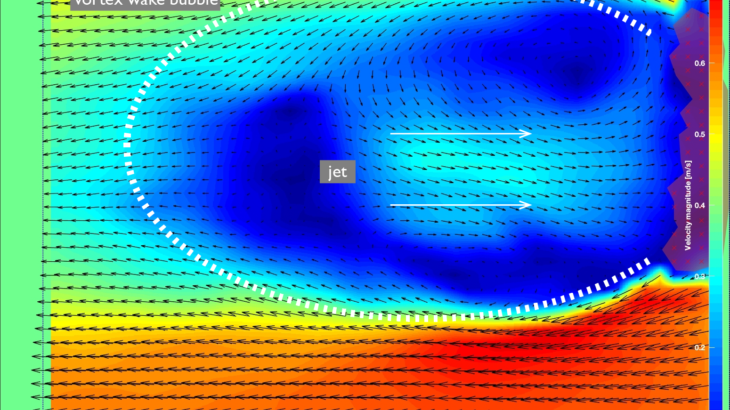Plants and their pollinators must interact with changing airflow while simultaneously interacting as individual organisms. For flying pollinators, this includes flight through gusts and performing complex aerial maneuvers. Recent studies have begun to explore how these animals alter behavior in response to unsteady air, but we do not know if these conditions represent the local airflow environment the animal encounters as it approaches a target plant to land or feed. Plants, from the tallest trees to smallest flowers, are susceptible to bending, twisting, bobbing, and buckling due to wind loading. Both the induced motion and the morphology of the plant can lead to disruption of airflow such as the formation of vortices and other wake structures downstream. Of flying pollinators, hawkmoths have been well-studied from ecological, aerodynamic, and behavioral perspectives, but less attention has been paid to the flowering plants they interact with in nature. At this scale, wind often blows from multiple directions and evidence suggests that flowers can re-orient to face downstream which means that pollinators would often fly through flower wakes.
To explore the features present in natural flower wakes, we visualized the airflow downstream of multiple hawkmoth-pollinated flowers and measured flow velocities using 2D particle image velocimetry (2D PIV). Hawkmoths feed from flowers across a wide size range, approximately 30-100 mm in diameter. We sampled flowers from the most ecologically well-established plant-pollinator relationships for Manduca sexta: Datura wrightii and Nicotiana alata. To cover the full range of flower sizes, we also sampled multiple Petunia species. In all flower wakes, there was a clear jet of air directed towards the center of the flower face, opposite the direction of the freestream airflow. For Datura and Petunia flowers the jet is at the center of a vortex bubble formed downstream (see figure: Petunia). Both the bubble size and the magnitude of the jet increase with increasing flower diameter. When hawkmoths approach flowers in nature they would first interact with the bubble boundary to enter the wake. Then, the animal would need to stabilize and hover in the jet. Our previous work determined the aerodynamic consequences of a steady induced wake angle for a hawkmoth hovering downstream with a blade-element model (BEM). At 0.7 m/s, a 20o downward angle in the incoming airflow results in a 9% loss in vertical force production due to changes in effective angle of attack. Hawkmoths may experience this “downwash effect” as they enter the flower wake bubble and additional losses in force could be incurred as they hover in the jet. Additionally, since the wake bubble and jet vary with flower size the effect on force production will also depend on pollinator size. Large pollinators approaching small flowers may not be perturbed by the flower wake, but would need to dynamically respond in a larger flower wake. Our results emphasize the importance of understanding the local flow environment that mediates interactions between plants and pollinators.
Figure caption: Snapshot of the average velocity flow field downstream of a Petunia flower, with the flower face in purple. The flower wake is characterized by by a vortex bubble (white dashed line) of comparable size to the flower diameter and a jet of fluid directed toward the flower face (area between white arrows). The color bar indicates the magnitude of the velocity and the freestream was set to 0.7 m/s.
